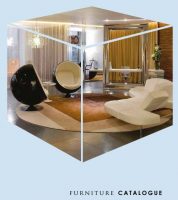Over the past decade, we’ve seen a shift in office design, with more organisations moving away from traditional styles with neutral colour schemes and structured layouts, and favouring more creative, flexible and inclusive designs. Rated as one of the best places to work in the world, you only have to look at Google to see how effective this approach can be. Of course, not every business has the desire, means or need to go to Google’s level of office design, but there are still steps you can take to design an office that will have a positive impact on your workforce – fueling productivity, wellbeing and engagement.
In this article, we’ve put together 6 easy steps to assist businesses in creating an engaging and inclusive office design that’s tailored to suit employees personalities and needs.
1. Create a Versatile Layout
A key aspect of office design is the layout. With the majority of modern offices adopting open-plan spaces with clusters or rows of desks, this does go a long way to promoting inclusion and easy communication. However, open-plan offices won’t work for everyone, therefore it’s important to recognise individual needs and personalities, providing a flexible layout with different types of workstations to meet employees’ unique working styles.
For example, a large proportion of your office may be open, but make sure there are small and large meetings rooms to allow staff peace and quiet for certain tasks when required. Also, incorporating varied break out spaces, such as standing workstations and comfortable seated areas will provide flexible places for staff to gather for impromptu meetings or just a change of scenery from desks.
2. Give Staff a Choice of Furniture
In taking the steps to designing an inclusive and engaging office, it’s also a good idea to involve staff in some way. You don’t necessarily need to give them free reign on the whole design, but offering choices on key items like workstation furniture will make them feel involved in the process. In addition, allowing them to choose furniture that suits their working style and needs could also improve engagement levels and productivity, as well as overall wellbeing.
3. Make It Accessible to Everyone
Not only is it a legal requirement to ensure your office design is accessible for everyone, it’s also a good way to demonstrate your company values. However, beyond ensuring suitable mobility access, you should also consider your office accessibility for a diverse workforce. With staff coming from different cultural, ethnic and religious backgrounds, where possible try to consider the diverse values, beliefs and needs during the design process, to ensure everyone feels like they have a space tailored to them.
4. Create a Welcoming Communal Area
Naturally, we all need a little time away from our desks to relax and refocus, and with recent figures showing that the average British worker takes just over 30 minutes for lunch and spends four out of five days eating lunch at their desk, this is definitely a good reason to incorporate a welcoming communal area for chill out time. These small breaks can make a real difference in terms of productivity and staff wellbeing, as well as creating a good social morale between workers – leaving them feeling valued and included in the office environment.
5. Don’t Forget the Decorative Touches
Considering the office as a reflection of the people who work there means moving away from bland, neutral colour schemes and injecting a personality into the environment. This can impact twofold, firstly creating a sense of identity within the office, and secondly, if done right, it can also fuel creativity and productivity. Whether it’s wood-effect floor tiles or brightly coloured walls, these finishing touches will work to reflect the personality and diversity of your employees. Also, don’t be afraid to use a variety of colours and themes in different areas – and you can even include your team in the decor decision.
6. Choose Lighting and Accessories That Impact Productivity
Another step is to focus on lighting and accessories to complete your office design. First and foremost, allow as much natural light into the office as possible, as it’s proven to impact productivity levels and wellbeing. In addition, choosing the right artificial lighting can affect productivity – so make sure you find the right balance between too bright and too dim. You may also want to consider individual working habits, for instance, providing late workers with desk lamps to ensure they have the tools they need for any time of day.
With so many different elements and individuals to consider, office design can seem like a minefield – but hopefully, these steps will point you and your team towards creating a workspace that you can all be a part of.
https://cxm.co.uk/6-easy-steps-engaging-inclusive-office-design/


